-
 Bitcoin
Bitcoin $106,684.2039
-0.52% -
 Ethereum
Ethereum $2,399.8703
-0.98% -
 Tether USDt
Tether USDt $1.0003
0.01% -
 XRP
XRP $2.0879
-1.38% -
 BNB
BNB $643.7981
-0.29% -
 Solana
Solana $141.0383
-0.39% -
 USDC
USDC $0.9999
0.01% -
 TRON
TRON $0.2718
0.30% -
 Dogecoin
Dogecoin $0.1588
-0.85% -
 Cardano
Cardano $0.5472
-1.45% -
 Hyperliquid
Hyperliquid $36.1292
-0.48% -
 Bitcoin Cash
Bitcoin Cash $502.5414
2.20% -
 Sui
Sui $2.7016
3.59% -
 Chainlink
Chainlink $12.8198
-2.00% -
 UNUS SED LEO
UNUS SED LEO $9.0559
0.58% -
 Stellar
Stellar $0.2333
-0.73% -
 Avalanche
Avalanche $17.2524
0.16% -
 Toncoin
Toncoin $2.8273
0.70% -
 Shiba Inu
Shiba Inu $0.0...01112
-0.86% -
 Litecoin
Litecoin $83.4315
-0.94% -
 Hedera
Hedera $0.1439
0.75% -
 Monero
Monero $307.7259
-1.44% -
 Bitget Token
Bitget Token $4.6301
3.49% -
 Dai
Dai $0.9998
0.01% -
 Ethena USDe
Ethena USDe $1.0001
0.02% -
 Polkadot
Polkadot $3.3102
0.39% -
 Pi
Pi $0.5662
0.55% -
 Uniswap
Uniswap $6.8290
0.70% -
 Aave
Aave $256.8983
2.19% -
 Pepe
Pepe $0.0...08994
-2.79%
Can I add positions after breaking through the upper edge of the box and stepping back without breaking?
After a bullish breakout, traders can add positions during a pullback if the price holds above the broken resistance, using tighter stop losses and confirming patterns like hammers or engulfing bars.
Jun 27, 2025 at 09:56 pm
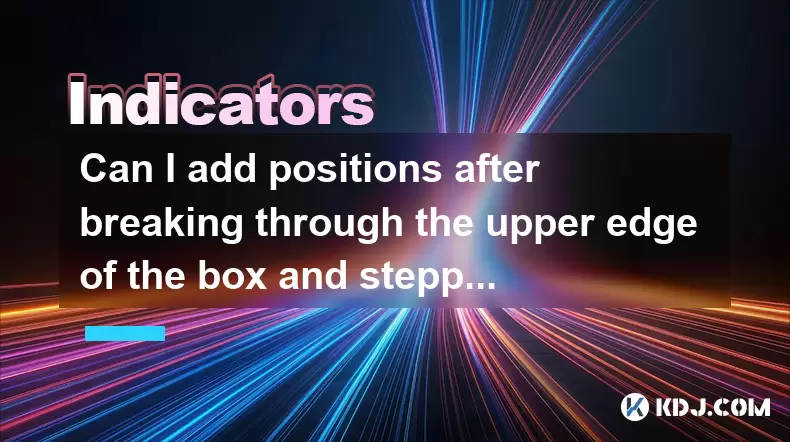
Understanding the Box Breakout Strategy
In cryptocurrency trading, box breakout strategies are commonly used by technical analysts to identify potential price movements. A box, or a trading range, refers to a period where the price of an asset moves within two horizontal levels — the support (lower boundary) and resistance (upper boundary). When the price breaks above the upper edge of this box, it is considered a bullish breakout.
However, many traders hesitate to enter immediately after the breakout due to the possibility of a false breakout or a pullback. This raises the question: Can I add positions after breaking through the upper edge of the box and stepping back without breaking?
The answer lies in understanding how pullbacks work and whether the structure remains intact after the initial breakout.
What Happens After a Breakout?
After a breakout from a consolidation box, it's common for the price to step back or retest the broken resistance level. This retest often serves as a confirmation that the breakout was genuine and not a false move. During this phase, traders look for signs of market acceptance at higher levels.
If the price pulls back but doesn’t break below the original box’s upper boundary, it suggests that the momentum still favors the bulls. In such cases, adding to your position during the retest can be a strategic move with reduced risk compared to entering right after the initial breakout.
It is crucial to monitor:
- Volume during the pullback
- Candlestick patterns indicating rejection of lower prices
- Key moving averages acting as dynamic support
Identifying a Valid Pullback
A valid pullback typically shows the following characteristics:
- The price does not close below the broken resistance level
- Trading volume decreases during the pullback
- Bullish candlestick formations appear near the support zone
For example, if Bitcoin consolidates between $60,000 and $62,000 and breaks out to $63,000 before pulling back to $62,500 without closing below $62,000, the structure remains intact. Traders can consider adding long positions at this point, using the $62,000 level as a stop loss.
Key steps include:
- Confirming the breakout was not a fakeout
- Watching for confluence with other indicators like RSI or MACD
- Waiting for a bullish candlestick pattern such as a hammer or engulfing bar
Risk Management When Adding Positions
When considering adding positions post-breakout and during a pullback, proper risk management becomes essential. Since you're entering after the initial move, your stop loss should be tighter than if you had entered before the breakout.
Some effective practices include:
- Setting a stop loss just below the original box’s upper boundary
- Adjusting position size based on the new entry point
- Using trailing stops if the price resumes its upward trend
For instance, if you initially entered a long trade at $63,000 and now see the price pull back to $62,500, you might add another lot with a stop loss at $61,900 instead of $61,500. This keeps your average entry price favorable while maintaining manageable risk per trade.
Practical Example Using Chart Patterns
Let’s take a real-world scenario involving Ethereum. Suppose ETH has been consolidating in a box between $3,000 and $3,200. It breaks out to $3,300, then pulls back to $3,150 without breaking below $3,000. Here’s what to do:
- Confirm the breakout with increased volume
- Wait for the price to stabilize near $3,100–$3,150
- Look for bullish reversal candles like a morning star or bullish harami
- Enter a new long position with a stop below $3,000
This method allows traders to ride the next leg up with confidence, knowing the market has already digested some selling pressure during the pullback.
Frequently Asked Questions
Q: What if the pullback breaks below the original box’s upper edge?
If the price closes significantly below the broken resistance, it could signal a failed breakout. In such cases, it's safer to avoid adding positions until a new setup forms.
Q: How much should I increase my position when adding during a pullback?
Position sizing depends on your overall risk tolerance. Some traders increase their position by 25% to 50% of the original, ensuring they don't overcommit capital based on a single setup.
Q: Can I use this strategy in both bull and bear markets?
Yes, this approach works in any market condition as long as the box structure is well-defined and respected. However, in strong downtrends, shorting during a retest of a broken support can also be applied using the same principles.
Q: Should I always wait for a candlestick reversal pattern before entering?
While not mandatory, waiting for a reversal pattern improves the probability of a successful trade. It helps filter out weak pullbacks and confirms buying interest at key support zones.
Disclaimer:info@kdj.com
The information provided is not trading advice. kdj.com does not assume any responsibility for any investments made based on the information provided in this article. Cryptocurrencies are highly volatile and it is highly recommended that you invest with caution after thorough research!
If you believe that the content used on this website infringes your copyright, please contact us immediately (info@kdj.com) and we will delete it promptly.
- Sonic, Magic Gathering, and July 2025: What's Trending?
- 2025-06-28 02:30:12
- Bitcoin Whale Inflows Nosedive: Are Investors Eyeing a New All-Time High?
- 2025-06-28 02:30:12
- Smart Investors Eye Audited Token RUVI for Rally Prediction
- 2025-06-28 02:35:12
- Neo Pepe, XRP & Cardano: A Memecoin Summer Showdown?
- 2025-06-28 02:55:12
- Qubetics, Cosmos, Cardano: Decoding Today's Crypto Buzz
- 2025-06-28 02:55:12
- Snap Inc.'s AR Momentum: Stock Surge Fueled by Teen Engagement
- 2025-06-28 02:57:07
Related knowledge
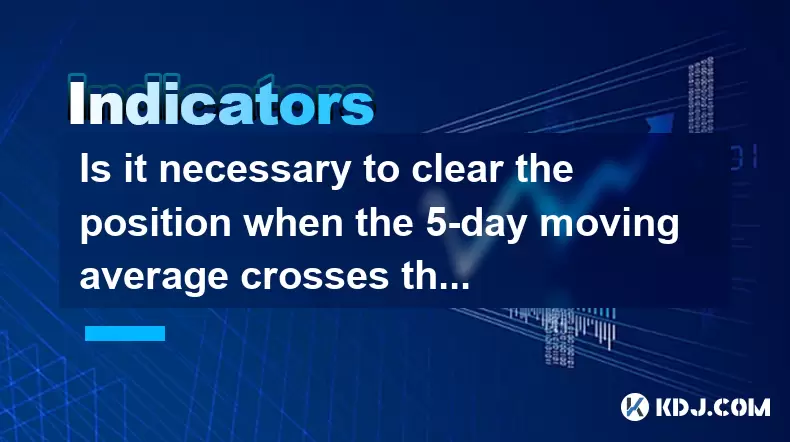
Is it necessary to clear the position when the 5-day moving average crosses the 10-day moving average?
Jun 27,2025 at 07:21pm
Understanding the 5-Day and 10-Day Moving AveragesIn the realm of technical analysis within the cryptocurrency market, moving averages play a crucial role in identifying trends and potential reversal points. The 5-day moving average (MA) and 10-day moving average are two of the most commonly used short-term indicators by traders. These tools smooth out ...

Can I add positions after breaking through the upper edge of the box and stepping back without breaking?
Jun 27,2025 at 09:56pm
Understanding the Box Breakout StrategyIn cryptocurrency trading, box breakout strategies are commonly used by technical analysts to identify potential price movements. A box, or a trading range, refers to a period where the price of an asset moves within two horizontal levels — the support (lower boundary) and resistance (upper boundary). When the pric...
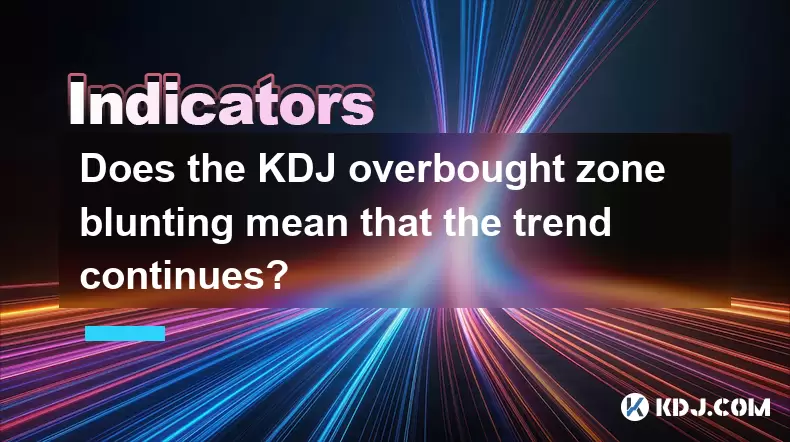
Does the KDJ overbought zone blunting mean that the trend continues?
Jun 27,2025 at 03:35pm
Understanding the KDJ Indicator in Cryptocurrency TradingThe KDJ indicator, also known as the stochastic oscillator, is a popular technical analysis tool used by traders to identify overbought or oversold conditions in asset prices. In the cryptocurrency market, where volatility is high and trends can change rapidly, understanding how to interpret the K...
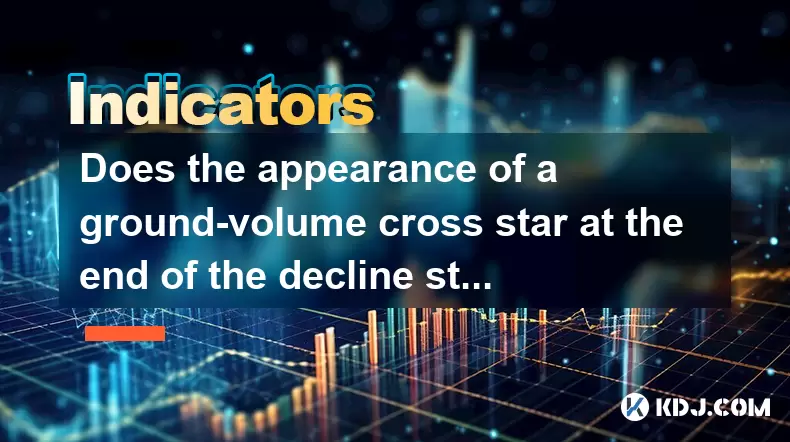
Does the appearance of a ground-volume cross star at the end of the decline stop the decline?
Jun 27,2025 at 10:35pm
Understanding the Ground-Volume Cross Star PatternIn technical analysis, candlestick patterns play a crucial role in identifying potential market reversals. One such pattern is the ground-volume cross star. This pattern typically appears at the bottom of a downtrend and is characterized by a small-bodied candle with long upper and lower shadows, accompa...
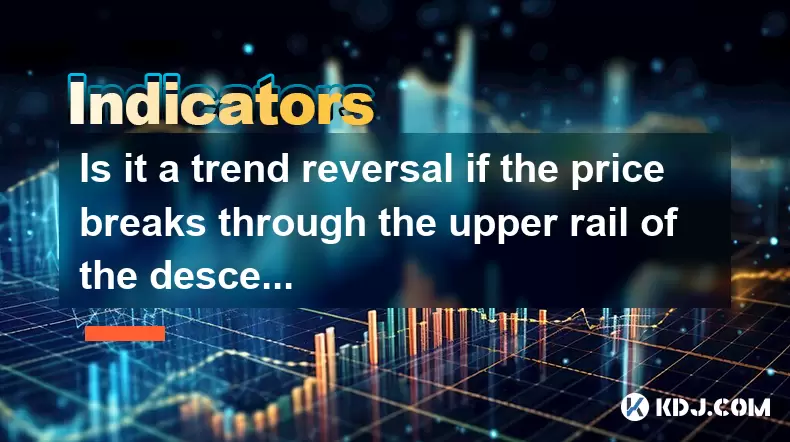
Is it a trend reversal if the price breaks through the upper rail of the descending channel and then steps back without breaking?
Jun 27,2025 at 05:35pm
Understanding the Descending Channel PatternA descending channel is a technical analysis pattern formed by two parallel downward-sloping trendlines, one acting as resistance and the other as support. This pattern typically indicates a continuation of a downtrend, where price action oscillates between these two boundaries. Traders often look for breakout...
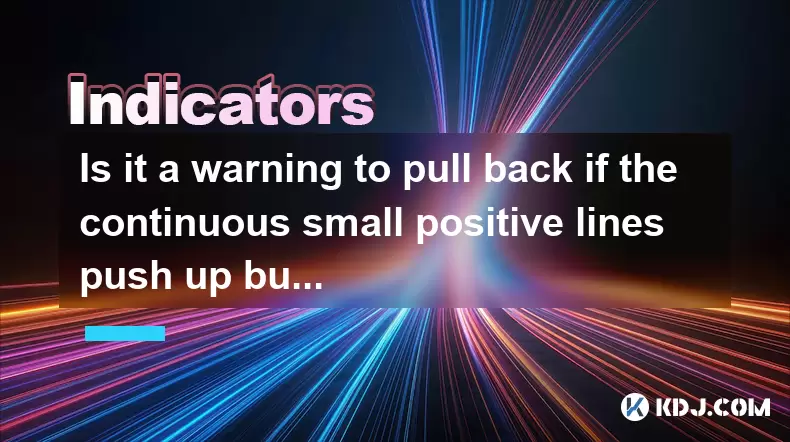
Is it a warning to pull back if the continuous small positive lines push up but the volume is insufficient?
Jun 27,2025 at 05:28pm
Understanding the Pattern: Continuous Small Positive LinesIn technical analysis, continuous small positive lines refer to a series of candlesticks where each candle closes slightly higher than its open. These candles usually have short wicks and indicate a gradual upward movement in price. Traders often interpret this pattern as a sign of steady buying ...

Is it necessary to clear the position when the 5-day moving average crosses the 10-day moving average?
Jun 27,2025 at 07:21pm
Understanding the 5-Day and 10-Day Moving AveragesIn the realm of technical analysis within the cryptocurrency market, moving averages play a crucial role in identifying trends and potential reversal points. The 5-day moving average (MA) and 10-day moving average are two of the most commonly used short-term indicators by traders. These tools smooth out ...

Can I add positions after breaking through the upper edge of the box and stepping back without breaking?
Jun 27,2025 at 09:56pm
Understanding the Box Breakout StrategyIn cryptocurrency trading, box breakout strategies are commonly used by technical analysts to identify potential price movements. A box, or a trading range, refers to a period where the price of an asset moves within two horizontal levels — the support (lower boundary) and resistance (upper boundary). When the pric...

Does the KDJ overbought zone blunting mean that the trend continues?
Jun 27,2025 at 03:35pm
Understanding the KDJ Indicator in Cryptocurrency TradingThe KDJ indicator, also known as the stochastic oscillator, is a popular technical analysis tool used by traders to identify overbought or oversold conditions in asset prices. In the cryptocurrency market, where volatility is high and trends can change rapidly, understanding how to interpret the K...

Does the appearance of a ground-volume cross star at the end of the decline stop the decline?
Jun 27,2025 at 10:35pm
Understanding the Ground-Volume Cross Star PatternIn technical analysis, candlestick patterns play a crucial role in identifying potential market reversals. One such pattern is the ground-volume cross star. This pattern typically appears at the bottom of a downtrend and is characterized by a small-bodied candle with long upper and lower shadows, accompa...

Is it a trend reversal if the price breaks through the upper rail of the descending channel and then steps back without breaking?
Jun 27,2025 at 05:35pm
Understanding the Descending Channel PatternA descending channel is a technical analysis pattern formed by two parallel downward-sloping trendlines, one acting as resistance and the other as support. This pattern typically indicates a continuation of a downtrend, where price action oscillates between these two boundaries. Traders often look for breakout...

Is it a warning to pull back if the continuous small positive lines push up but the volume is insufficient?
Jun 27,2025 at 05:28pm
Understanding the Pattern: Continuous Small Positive LinesIn technical analysis, continuous small positive lines refer to a series of candlesticks where each candle closes slightly higher than its open. These candles usually have short wicks and indicate a gradual upward movement in price. Traders often interpret this pattern as a sign of steady buying ...
See all articles























































































